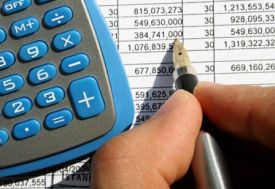 Assets are good and liabilities are bad. Having more assets than liabilities is good and having more liabilities than assets is bad. But why do total assets and total liabilities in a business’s balance sheet always “balance” (i.e. always equal each other)? It’s not really that mysterious. Balance sheets are just snapshots taken at a point in time — just a page in a book that is the whole story of a business enterprise. As such, balance sheets make sense only when taken in context of that story.
Assets are good and liabilities are bad. Having more assets than liabilities is good and having more liabilities than assets is bad. But why do total assets and total liabilities in a business’s balance sheet always “balance” (i.e. always equal each other)? It’s not really that mysterious. Balance sheets are just snapshots taken at a point in time — just a page in a book that is the whole story of a business enterprise. As such, balance sheets make sense only when taken in context of that story.
The best way to understand why a balance sheet is always “balanced” is to start at the very beginning.
Upon inception, a business enterprise might start with a bit of money in the bank to get things going. Where would this money come from? Perhaps a bit of it from the business owner’s own savings and maybe some of it from a bank loan. The balance sheet of this hypothetical business embryo might look something like this:
| SUPPORT INDEPENDENT SOCIAL COMMENTARY! Subscribe to our Substack community GRP Insider to receive by email our in-depth free weekly newsletter. Opt into a paid subscription and you'll get premium insider briefs and insights from us. Subscribe to our Substack newsletter, GRP Insider! Learn more |
The Widget Company
ASSETS
– Cash in bank: $100Total assets: $100
LIABILITIES
– Owner’s equity $75
– Bank loan $25Total liabilities $100
In the above example, Owner’s equity of $75 is the business owner’s personal investment into the venture. Together with a bank loan of $25, she starts out with $100 in the bank. With this initial state in her finances, she’s ready for business!
Things get interesting once the business starts using that money in the bank. Say, the business will be engaged in the buying and selling of widgets. This means to really get started, the Widget Co needs to buy its first widget — and it finds a good one for $60. Its balance sheet now looks like this:
The Widget Company
ASSETS
– Cash in bank: $40
– Inventory: $60Total assets: $100
LIABILITIES
– Owner’s equity $75
– Bank loan $25Total liabilities $100
Widget Co then sells the widget for $70 cash. It, thus, made a $10 profit on its first widget sale! After that flurry of business activity, its balance sheet now looks like this:
The Widget Company
ASSETS
– Cash in bank: $110
– Inventory: $0Total assets: $110
LIABILITIES
– Owner’s equity $75
– Bank loan $25
– Retained earnings $10Total liabilities $110
With growth comes increasing complexity as the above simple example demonstrates.
benign0 is the Webmaster of GetRealPhilippines.com.
Owners Equity is not a Liability. In fact Owner’s equity is Assets minus Liabilities.
Should look more like this:
Assets Liabilities
– Cash $110 – Bank Loan $25
– Inventory $0 – Total Liabilities $25
Owner’s Equity
– Owner’s Capital $75
– Retained Earnings $10
Total Assets $110 Liabilities + Equity $110
Liabilities are money you owe. Cash investments by the owner or funds from stock issue, go straight into equity accounts, because you don’t owe yourself money. Liabilities are debts from bonds, bank notes, leases. Retained earnings are earnings earned by the company not redistributed to the owners.
The “Balance” on the B/S is the equality of
Assets = Liabilities + Equity
or
Assets – Liabilities = Equity
Well that didn’t format properly.
Assets
– Cash $110
– Inventory $0
Total Assets $110
Liabilities
– Bank Loan $25
Total Liabilities $25
Owner’s Equity
– Owner’s Capital $75
– Retained Earnings $10
Total Equity $85
Total Liabilities and Owners Equity $110
I was trying to put Assets on the right column and Liabilities and Equity on the Right.
Assets on the Left*
@Benigno, you are one hell of a funny guy! This is too much….. 😉
kahit kuwentahin ninyo ang asset at liability kailangan parin ni corona na magpaliwanag sa mga deposit niya sa banko kahit anomang palusot ni cuevas ay wala na siyang magagawa dahil siya ang nagpatawag kay morales..
Corona magpaliwanag para manakaw ng gobyerno ang kanyang datung? Gobyerno naghahanap lang ng kotong!